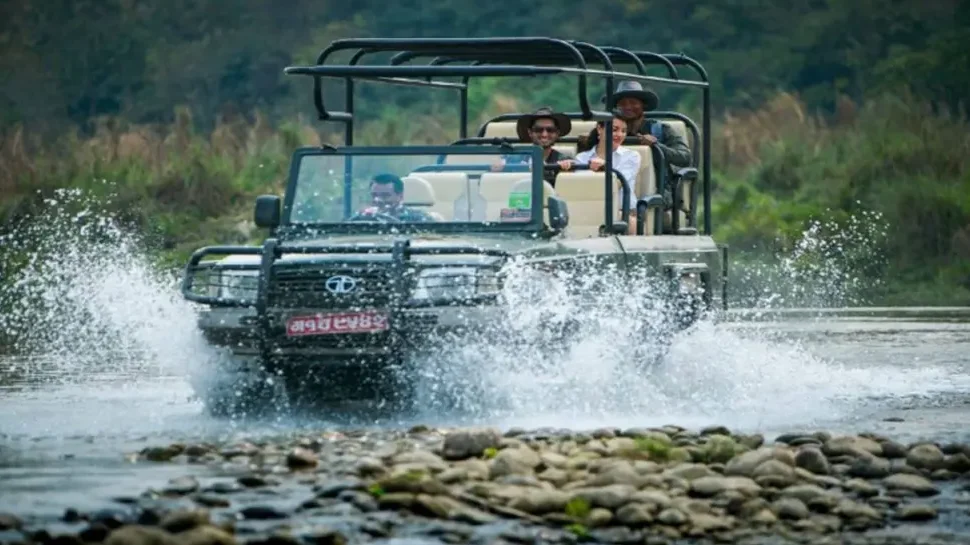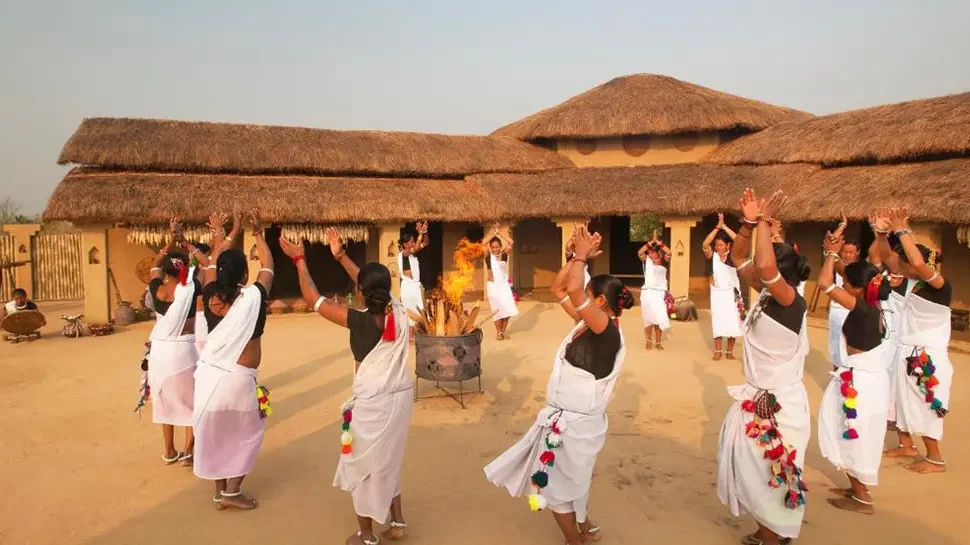Chitwan National Park, the first national park and a UNESCO world heritage site, is a paradise for wildlife enthusiasts and adventure lovers. The park has Bengal tigers, one-horned rhinos, elephants, gharials, and more than 500 bird species due to its lush forests and meandering rivers. Visitors can enjoy experiencing exciting jeep safaris, relaxing canoe and assisted jungle walks, and some cultural experiences with the local community (Tharu) in this area. It is important to know the most appropriate time of year to visit the Chitwan jungle for a safari, as the wildlife, accessibility, and weather in Chitwan National Park vary by season, making timing your visit essential for an unforgettable experience.
About Chitwan National Park
Chitwan National Park is a biodiversity hotspot that covers an area of more than 932 square kilometers in Nepal in the Terai lowlands. Dense forests, grasslands, and riverine ecosystems are home to endangered species like the Bengal tiger, the one-horned rhinoceros, elephants, and gharials. The park is also a birdwatcher’s dream, hosting migratory and resident species throughout the year.
The safari activities differ in the form of jeep safaris in the grasslands to canoe trips in the Rapti River, which offer two different views on the wildlife behavior. In addition to nature, the park will offer an insight into the life of the Tharu people, who have a rich culture, traditional dances, and crafts, which appear to add up to the entire experience of the safari.
Factors to Consider When Planning Your Visit
Choosing the right Chitwan safari season is essential to maximize wildlife encounters and comfort. Chitwan National Park weather plays a major role; heavy rainfall during monsoon can limit access, while extreme summer heat may reduce wildlife activity. Sightings of animals depend on the season of the year; during dry months, most of these species are found around water holes, so they are easier to observe.
Crowds also exhibit seasonality, with large crowds offering energetic experiences and quieter off-seasons providing a calmer experience. With this kind of safari, photography, and individual comfort level of weather conditions, it is a safer, easier, and more satisfying experience in Chitwan National Park.
The best time to visit chitwan national park
Autumn (September–November)
Autumn is the prime Chitwan safari season. Post-monsoon greenery, clear skies, and moderate temperatures make wildlife spotting easy. Animals are highly active, and jeep safaris or jungle walks are comfortable. Photographers will love crisp sunlight and scenic landscapes, capturing rhinos, tigers, elephants, and vibrant grasslands at their most picturesque.
Winter (December–February)
Winter brings cool, dry days, ideal for exploring Chitwan. Wildlife gathers near waterholes, increasing sightings of rhinos, elephants, and deer. Morning mist adds a magical touch for photographers. Low humidity and pleasant temperatures make jungle walks enjoyable. Fewer insects and quieter trails create a serene safari experience for visitors seeking comfort and wildlife encounters.
Spring (March–May)
Spring turns Chitwan into a colorful paradise as flowers bloom and migratory birds arrive. Wildlife remains active, and warm temperatures with gentle breezes make canoe rides and nature walks comfortable. Photography opportunities are excellent with vibrant landscapes, flowering trees, and active animals. Spring combines pleasant weather, lively wildlife, and stunning natural beauty.
Monsoon (June–August)
Monsoon rains transform Chitwan into a lush green wonderland. Rivers swell, forests thrive, and the park feels vibrant. Trails can be slippery, and some areas are inaccessible, but tourist crowds are minimal. Canoe rides and short walks provide peaceful wildlife encounters, offering solitude and a unique experience amid the rejuvenated jungle.
Month-by-Month Guide
- September to November: The best time to visit Chitwan for safari season, as visitors have the greatest opportunities to see tigers, rhinos, and elephants. The clear weather following the monsoon, along with temperate conditions and colorful landscapes, creates ideal circumstances for jeep tours, jungle hiking, and photography. Chitwan National Park weather is pleasant and hence makes it one of the best months for a safari adventure.
- December-February: The winter is cold and dry in the mornings and cold and dry during the day. The concentration of wildlife around waterholes facilitates easy viewing. Foggy mornings and bright light will delight photography enthusiasts. Having reduced insect numbers as well as favorable temperatures, this time will provide a comfortable, peaceful safari experience.
- March-May: Spring makes Chitwan a colorful, lively place as flowers are in blossom and migratory birds come back. Wildlife is still alive and warm, but breezy afternoons are making canoe trips, bird watching and walks in nature pleasant. The springtime is a fantastic period to take pictures of wildlife and landscapes.
- June-August: It turns the park into a green marvel with the help of the monsoon. The number of tourists will be reduced, providing a relaxing and isolated experience. However, heavy rainfall can make certain safari paths slippery or even completely closed. It is still possible to take a canoe ride and short guided walks and have a serene experience with the rejuvenated beauty of the jungle.
With proper planning of your trip based on the most suitable month to be on a jungle safari in Chitwan, you are likely to have the best wildlife experiences, excellent weather, and a memorable safari experience.
Recommended Safari Activities by Season
Jeep safaris have been the most sought-after activity for seeing tigers, rhinos, and elephants all year round. Rides in canoes showcase crocodiles and rare birds, as well as beautiful views of the river. Birdwatchers can enjoy seasonal migratory species in spring and autumn. Nature walks and tours lead to intimate experiences with smaller mammals and reptiles. Cultural experiences, such as tours to Tharu villages, present traditional dances, crafts, and cuisine. Each Chitwan safari activity has its own charm depending on the season: dry months are for wildlife observation, winter mornings are for photography, and rainy months are for enjoying the park’s beauty and tranquility.
Travel Tips for Chitwan Safari
- Wear neutral clothing; layer for cool mornings/evenings
- Carry binoculars and a camera
- Stay with certified guides; follow park rules
- Use insect repellent and sunscreen, and stay hydrated
- Respect Tharu village traditions
- Book accommodations and safaris in advance
- Be patient—quiet observation improves wildlife sightings
Wanna know more : Click me
Conclusion
The Chitwan National Park has the best time to visit depending on your priorities. Autumn and winter are the best seasons to see wildlife because of the great scenery and active bird life; spring is a season of color with great scenery and monsoon is a period when one can enjoy solitude among the green foliage. Planning a trip to Chitwan National Park by season, Chitwan National Park weather and the best month to go to Chitwan jungles revolve around making the best out of a wildlife trip; hence, you are certain of a safe, comfortable and memorable jungle adventure. Be ready to visit the national park of Nepal, full of adventure, where adventure meets culture and the peace of nature.




